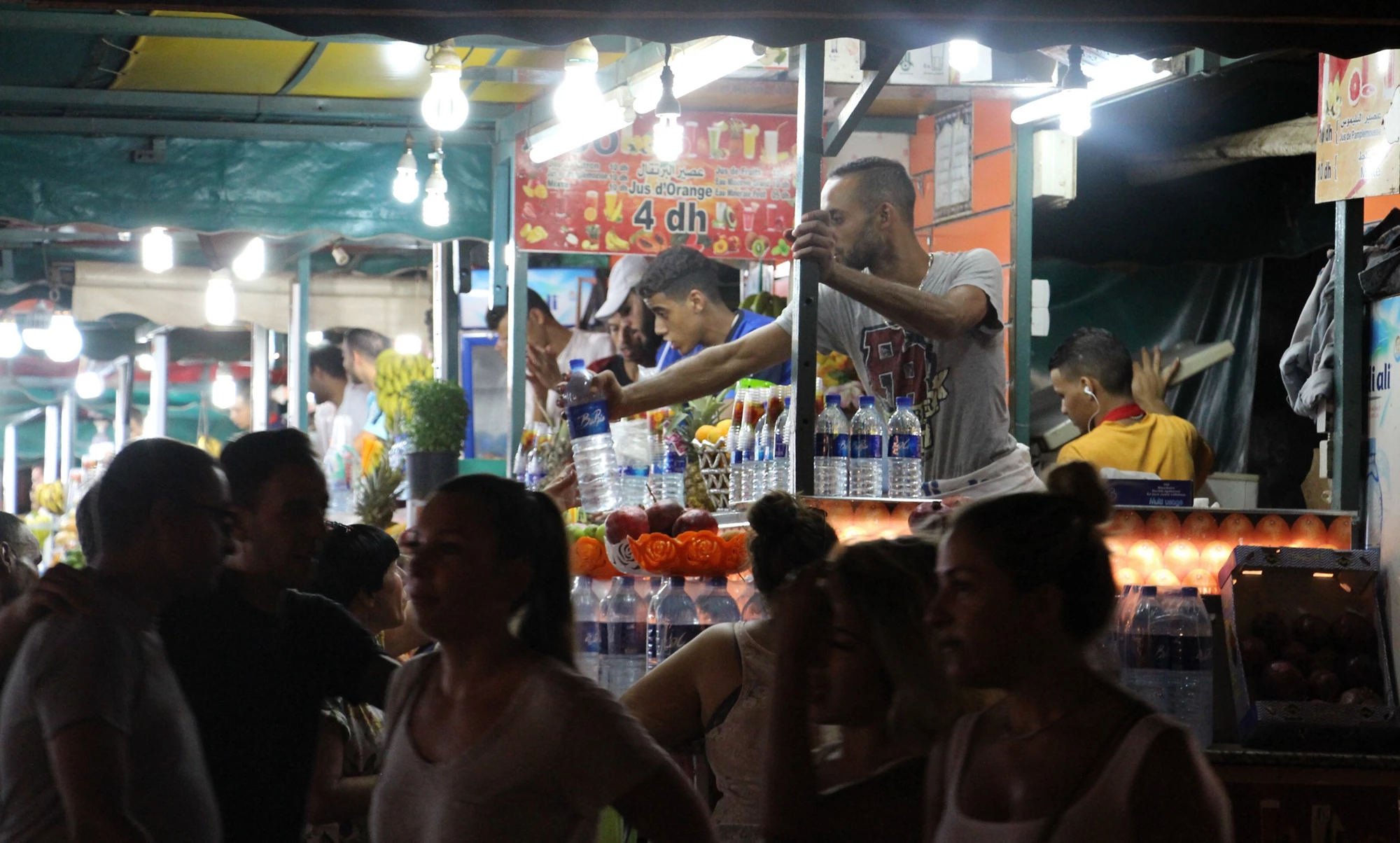 صورة من لسوق في مراكش، المغرب
صورة من لسوق في مراكش، المغرب
One of the most important prerequisites to the economic transformation of a country is reliable electricity supply. Reliable electricity is underpinned by a power sector that is financially sustainable, has effective regulation and attracts steady investments .
Yet, during the past 25 years, there has been uneven progress on this front in developing countries around the world. One country that has made positive strides is Morocco.
Morocco’s experience with power sector reforms has been distinct. The country had strong political objectives around rural electrification and decarbonization that serendipitously anticipated the SDG agenda, such that the approach to reform reflected the prioritization of these objectives. Thus, Morocco has reached almost 100% rural electrification and is also a leading performer in implementing a renewable energy strategy . More than half of electricity is from private generation plants and there is significant private participation in the distribution sector as well.
These outcomes have been achieved within an institutional arrangement that differ from the prescribed norm but work in Morocco’s unique context. The country has retained a strong, state-owned and vertically-integrated national power utility, Office National de l’Electricité et de l’Eau potable (ONEE). Morocco also had no independent regulatory entity until 2016 when the Autorité Nationale de Régulation du secteur de l’Electricité (ANRE) was created. The Moroccan Agency for Sustainable Energy (MASEN) was created in 2010 to lead and manage the deployment of renewable energy.
There are several lessons, from this progress as well as the remaining risks in the system, for developing countries especially those in Africa, still struggling with inefficient utilities and insufficient investments.
Morocco’s Achievements in the Power Sector
In our paper, we examine Morocco’s power sector performance along four parameters. These are: security of energy supplies, electricity access and affordability, utility efficiency and financial viability and tariff regulation and cost recovery. For each, we also examine the underlying institutional arrangements.
Here’s what we found.
On security of supply, power generation in Morocco has grown over three-fold, from under 10TWh in 1990 to 32TWh in 2017 , and capacity has grown nearly two-fold, from 5,233MW in 2005 and 8,820MW in 2017. This is largely the result of investments in the sector as private power plants account for more than half (50.8 percent) of electricity generation. The share of renewables in its energy mix has also increased to nearly 34 percent of installed capacity (and projected to reach 42.7 percent by 2020).
Electricity Generation in GWh (1990-2017)

Morocco has also achieved near universal access to affordable electricity . The country’s ambitious rural electrification plan, Programme d’Électrification Rurale Généralisé’ (PERG), coordinated by ONEE, guided rapid growth in rural access from 18 percent in 1995 to 99.5 percent by 2017. Since PERG was launched in 1996, over 42,000 rural villages and 2.1 million households have been provided with electricity access. Electricity remains highly affordable, as the bottom 40 percent spend only 1 percent of their monthly income for the barest minimum of electricity consumption for that period.
Rural Electrification (1995 to 2017)

On utility efficiency and financial viability, however, the story is mixed.
Operational performance fluctuated over time while financial performance in the sector was chronically weak. Following a prolonged period of net losses that necessitated government bailouts, ONEE’s financial indicators began to improve in 2016. The persistent financial challenges notwithstanding, ONEE is a technically competent utility with adequate human resources. For a long time, Morocco’s power sector functioned without a regulatory entity, leading to limited application of best practice methodologies for tariff regulation. But that changed between 2014 and 2017, when new tariffs were implemented as part of a financial restructuring process and a new regulator, ANRE, was created in 2016.
Lessons from Morocco’s Unique Power Sector Institutional Arrangements
There are at least three lessons for developing countries from Morocco’s experience.
First, Morocco pursued reforms in a selective and incremental manner in an environment where legacy entities can obstruct sudden and far-reaching reforms. For instance, policy makers were selective in their approach to privatizing electricity distribution, through concessions to AMENDIS, LYDEC and REDAL, that reinforced existing territorial monopolies, rather than full or partial divestiture of municipal utilities. In the development of renewable energy, grid access was slowly granted to renewable energy producers. This gradualism minimized disrupting the influence and market share of stakeholders like ONEE, certain ministries and the distribution companies.
Second, institutional arrangements in Morocco are different from those prescribed by the 1990s power sector reform model, but nonetheless perform the necessary functions in practice. In expanding electricity access for instance, ONEE played a coordination role for domestic and international stakeholders. This aligns with findings of the World Development Report 2017 on Governance and the Law and broader research that the functions that institutions perform matter more than the form they take. Thus, Morocco’s power sector institutional arrangements performed the necessary commitment, coordination and cooperation functions to achieve objectives of attracting private investments to boost installed generation capacity and output.
Third, Morocco was able to pursue socio-economic objectives in the power sector due to its strong and growing economy. There are cross-subsidies between electricity and water services at the municipal level, between urban and rural customers, and between different urban customer groups. This has been possible due to the country’s strong economic growth averaging 4.2 percent over the past two decades, and a relatively large population of electricity consumers with the ability to pay. Despite a strong economic base, these socio-economic considerations have taken their toll on the financial health of ONEE, which has nonetheless proved capable of balancing these conflicting considerations.
As efforts accelerate to provide electricity to the over 800 million people lacking electricity access around the world, and predominantly in Africa, it is essential to define the priority policy objectives and structure sector reforms around those. The institutional pathways to achieving these objectives will vary by country context but can be guided by the general principles of effective governance in terms of efficiency, sustainability and equity in the power sector.
Subscribe here to stay up to date with the latest Energy blogs.


Join the Conversation